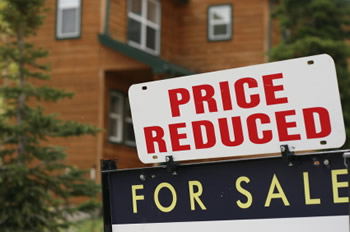
When one sex offender moves into a neighborhood, more are likely to follow—and that’s bad news for homeowners, according to the results of research conducted at Longwood University.
A study released recently by Longwood professors says that there appears to be a measurable effect of sex offender clustering to the point that the economic health of a neighborhood is at risk.
The research shows that while the presence of one registered sex offender in a neighborhood has a negative effect on home prices, a cluster of four or more within a quarter-mile of each other substantially increases a house’s time on the market—by as much as 147 percent, putting added downward pressure on home prices. The research also shows that clusters of sex offenders are likely to develop.
"We wanted to know if sex offenders cluster and if that has an effect on home prices," said Dr. Ray Brastow, professor of economics, one of four Longwood professors who conducted the study. "The answer to both questions is yes."
The study, "Neighborhood Tipping and Sorting Dynamics in Real Estate: Evidence from the Virginia Sex Offender Registry," examined data from nearly 20,000 real estate listings in central Virginia between 1999 and 2009.
The study attributes the clustering of sex offenders to several factors. Among these are lower home prices which would draw more potential home buyers to the neighborhood – especially those who are less concerned about living near a person on the registry. Who would be less concerned? Arguably, that group would include other registered sex offenders. Meanwhile, conscious property development choices can prevent registered sex offenders from living in an area.
"We know this is something that people talk about," said Brastow. "There are certain places that sex offenders can’t live—near schools, daycare centers and parks, for example. Because of this, some neighborhoods are creating small parks, called ‘pocket parks,’ or fighting school closings."
The data shows that the presence of just one registered sex offender within one-fourth of a mile was found to have a significant effect on home prices and liquidity. On average, the study indicates it takes 52 days more, or 47 percent longer, for those houses to sell. The research also demonstrated that the effect of two and even three nearby sex offenders is not significantly more pronounced than that of one sex offender.
"However, with four sex offenders, the situation changes dramatically," said Dr. Bennie Waller, professor of finance and real estate. "Here we find the ‘tipping’ point, the number at which people get panicky and a neighborhood takes an economic turn for the worse."
The research was conducted by Brastow, Waller, Dr. Xun Bian, assistant professor of finance, and Dr. Scott Wentland, assistant professor of economics. It recently won a Best Paper award when it was presented to the American Real Estate Society.
[Price Reduced image from ShutterStock]

